Student retention is a key indicator of how well colleges and universities support their students from enrollment to graduation. By understanding the factors that influence retention and applying targeted strategies—like personalized communication, academic support, and digital engagement institutions can improve student success and reduce dropout rates.
Table Of Contents
Introduction
Did you know that in 2024, over 86% of first-year college students in the U.S. returned for their spring semester? That’s the highest rate in over a decade, showing how important it is for colleges to keep students engaged and supported throughout their academic journey. In this blog, we’ll explain what student retention means in higher education and share practical, effective strategies to help institutions improve it.
What is Student Retention?
Student retention refers to the ability of a college, university, or other higher education institution to keep students enrolled in their academic programs until completion. It reflects how well the institution supports students throughout their educational journey.
While often used as a performance metric or KPI, student retention goes beyond numbers—it represents real individuals and their day-to-day experiences. To improve retention, institutions must explore key questions:
- Are students staying enrolled throughout their program?
- What supports and challenges affect their engagement?
- What actions can help students continue and succeed?
Ultimately, retention is about creating a learning environment where students feel supported, engaged, and motivated to complete their studies.
Why is Retention Important in Higher Education?
Student retention is a critical metric in higher education, reflecting both the financial health and overall effectiveness of an institution. Strong retention efforts in higher education indicate that colleges are successfully supporting students throughout their academic journey. Here’s why retention matters:
Ensures Financial Stability for Institutions
High student retention helps colleges maintain a steady flow of tuition and fee income, which is vital for day-to-day operations and long-term planning. When students stay enrolled, institutions can better manage budgets and allocate resources effectively. For instance, Angelo State University earned an additional $2.85 million in tuition revenue by keeping off-track students enrolled through Indiana’s Acadeum course-sharing program.
Indicates Institutional Stability and Academic Quality
Retention rates serve as a strong indicator of an institution’s overall health. When students remain enrolled and progress through their academic programs, it signals that they are satisfied with the quality of education, support services, and campus environment.
Enhances Student Success and Satisfaction
High retention rates suggest that students feel supported academically, socially, and emotionally. This means institutions are effectively addressing students’ needs through advising, mental health resources, extracurricular engagement, and academic support.
Boosts Enrollment and Attractiveness
A high student retention rate makes an institution more attractive to prospective students and their families. For example, the University of Tennessee–Knoxville’s first-year retention rate rose to 91.9%, which contributed to a record-breaking 18.4% increase in first-year applications. Similarly, the University of Tulsa achieved nearly a 99% retention rate for fall 2024, resulting in a similar spike in applications.
Builds a Stronger Campus Community
When students remain enrolled over multiple semesters, they become more engaged with campus life, build lasting relationships, and contribute to a vibrant academic and social community. This continuity enriches the overall student experience and fosters a more cohesive campus culture.
Top 5 Student Retention Challenges in Higher Education
Student retention isn’t just about keeping enrollment numbers up — it’s about helping students thrive and reach their goals. But many students face challenges that can derail their journey.
Financial Burdens
Paying for college is one of the biggest challenges students face today. From tuition to transportation and textbooks, the costs can quickly become overwhelming. A new report released by Ellucian revealed that 19% of students dropped out due to financial uncertainty, while 59% considered leaving college because of financial stress. Additionally, 76% of students said the amount and process of financial aid influenced their decision to attend college.
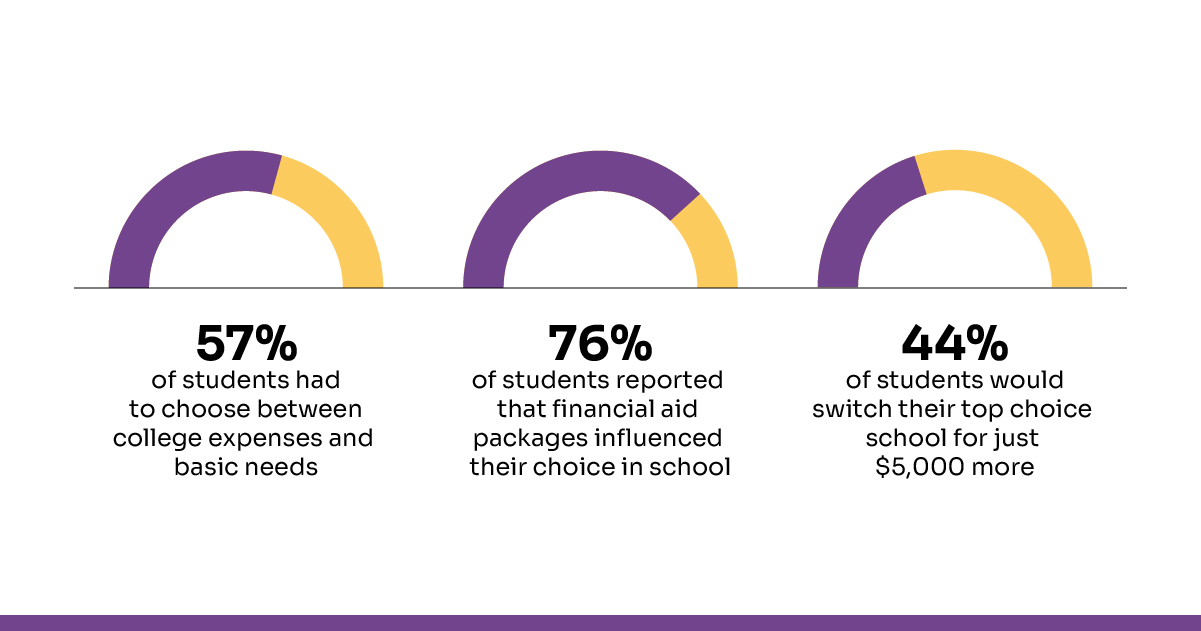
Solution
- Offer need-based aid that covers hidden costs
- Promote flexible payment plans and on-campus jobs
- Provide financial literacy workshops
Academic Struggles
A large number of students enter college without the skills needed to succeed academically. Learning gaps or conditions like learning disabilities—which affect about 13% of adults—can make it difficult to keep up with coursework. According to ACT data, only 21% of high school seniors meet all four college readiness benchmarks, even though 80% believe they are prepared.
Solution
- Expand tutoring, mentoring, and remedial courses
- Use early intervention to identify struggling students
- Offer accessible learning support for students with disabilities
Balancing Life and Studies
Today’s students are balancing much more than just academics — many are managing jobs, caring for family members, or involved in internships and extracurriculars. According to research, 57% of at-risk students come from low-income households, and over half work more than 20 hours per week. This heavy workload makes it difficult to focus on studies and increases the risk of dropping out.
Solution
- Offer flexible scheduling and online options
- Provide guidance on time management
- Encourage open communication with professors
Mental Health Concerns
Mental health challenges are a major barrier to student success in college. About 70% of students have struggled with mental health since starting college, according to a U.S. News survey. Stress, anxiety, and depression can make it difficult to stay focused and engaged. Many students feel isolated, leading to burnout and even dropping out.
Solution
- Create a strong campus community
- Offer free or low-cost counseling services
- Promote peer support groups and wellness programs
Lack of Student Support Awareness
Many colleges offer helpful resources like tutoring, counseling, and financial aid — but students often don’t know they exist. According to a report by Tyton Partners, 60% of students were unaware of the full range of support services. Among those who dropped out, only 44% knew about academic advising and just 32% knew about mental health services. Without awareness, students miss out on crucial help that could keep them on track.
Solution
- Regularly promote available resources via email, orientation, and social media
- Ensure staff are approachable and well-trained
- Make services easy to access both online and offline
Current College Student Retention Trends
As college enrollment shifts, so do student retention rates. Retention refers to the number of students who return to the same college after their first semester or year — and it’s a key measure of student success.
While recent data from the National Student Clearinghouse shows the average retention rate has risen to around 75%, it still hasn’t bounced back to pre-pandemic levels.
Recent data shows:
- In Spring 2024, 83.7% of first-year students returned to the same college for their second semester — the highest retention rate since 2015.
- The second-fall retention rate for the 2023 cohort was 69.5%, up slightly from 2022.
While these trends are positive, it’s important to note that 1 in 4 students do not stay at their original institution. These students often face tough decisions around credit transfers, delayed graduation, and student loan debt.
Effective Student Retention Strategies in Higher Education
Improving student retention isn’t just about keeping students enrolled — it’s about helping them succeed, feel supported, and reach graduation. With rising dropout rates and growing challenges like financial stress, mental health concerns, and academic pressure, institutions need effective strategies to keep students on track.
Use Predictive Data Analysis
Colleges can improve retention by using data to identify students who may be at risk of dropping out. Predictive tools help track academic performance, attendance, and engagement, enabling early support. For example, Georgia State and USC improved their retention rates by over 20% through timely, data-driven interventions. With EDMO’s Predictive Analytics feature, institutions can proactively detect student risk patterns and trigger timely outreach—enhancing student support and reducing dropouts.
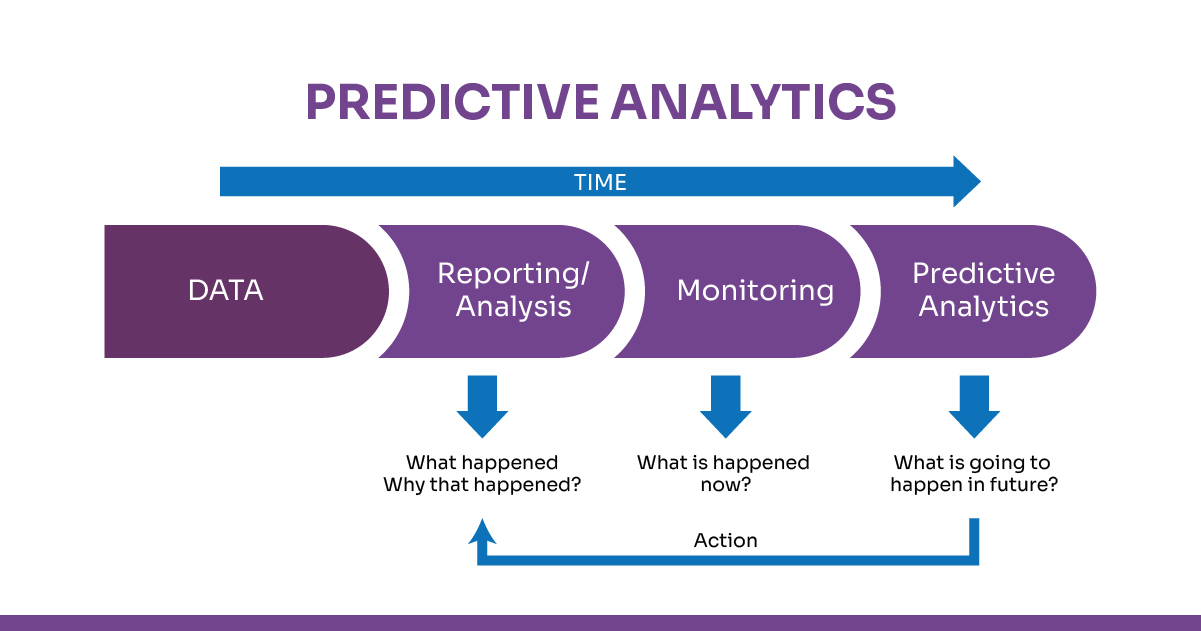
Apply Content Marketing to Build Connection
Engaging content helps students feel more connected to their campus. Sharing study tips, campus traditions, student stories, or videos on forming friendships builds a sense of belonging. The University of Texas’s student-run news site keeps students informed and engaged. This approach makes students feel valued and more likely to stay enrolled.
Gather Student Feedback Regularly
Listening to students is key to keeping them engaged and enrolled. By using surveys and feedback forms, colleges can better understand student needs, challenges, and expectations. According to the National Survey of Student Engagement (NSSE), institutions that actively collect and act on student feedback experience up to a 20% boost in retention rates.
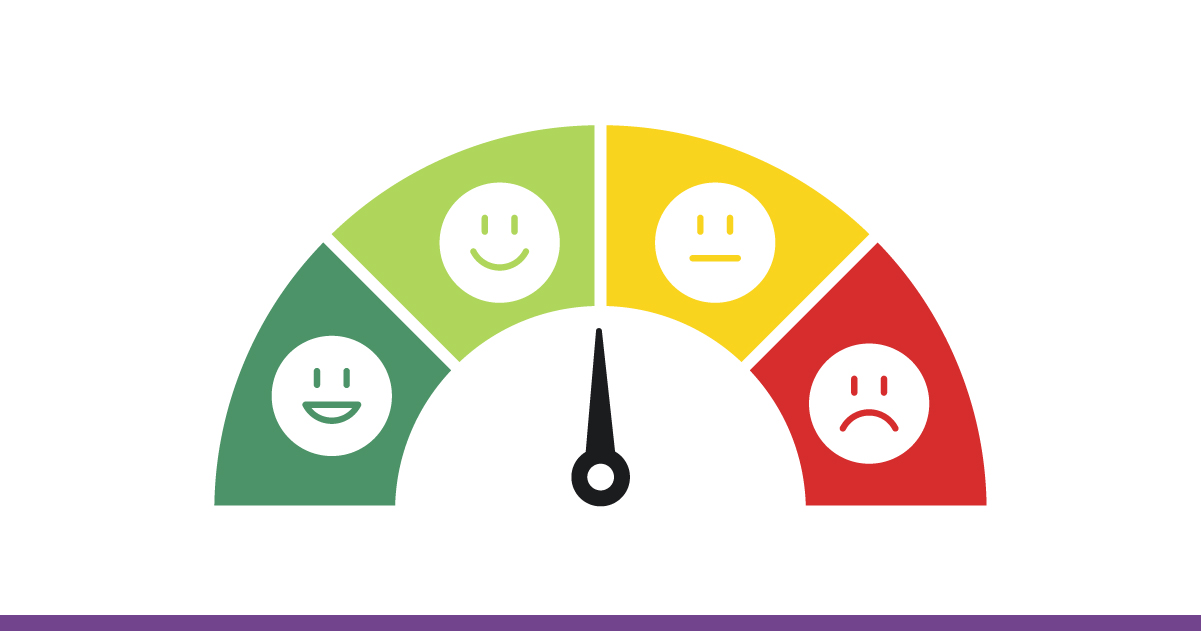
Implement Strong Enrollment Management
From orientation programs to financial aid and job placement support, enrollment management ensures students get the help they need from admission through graduation. Colleges like the College of the Atlantic offer merit-based scholarships to support students in completing their degrees, which improves retention.
Create Networking and Mentoring Opportunities
Building a sense of community goes a long way in improving student retention. Colleges that offer mentorship programs, peer connections, and networking events help students feel supported and engaged from the start. Institutions that implement peer mentorship programs often see up to a 30% increase in retention rates among first-year students, highlighting the power of early connection and support.
Retarget Past Students Through Ads and Social Media
Sometimes students leave due to financial or academic stress. Retargeting them through ads and social platforms can bring them back. For example, if a student visited the pricing page on your website but didn’t enroll, you could show them a special offer. AGM University used this method to boost enrollments for its master’s program.
Send Regular Email Newsletters
Email newsletters are a simple way to keep students updated and involved. You can share news, success stories, staff messages, or upcoming events. This builds excitement, keeps students informed about campus life, and makes them feel like a part of something bigger than their department.
Use Targeted Communication for At-Risk Students
Personalized communication is a powerful way to support students who may be struggling. Georgia State University improved retention by 20% by increasing advisor interactions and reducing the student-to-advisor ratio from 800:1 to 300:1. Tools like AI chatbots also help colleges stay connected with students and address issues early. EDMO’s intelligent chatbot enhances this process by sending timely, relevant messages and alerts, making student support more responsive.
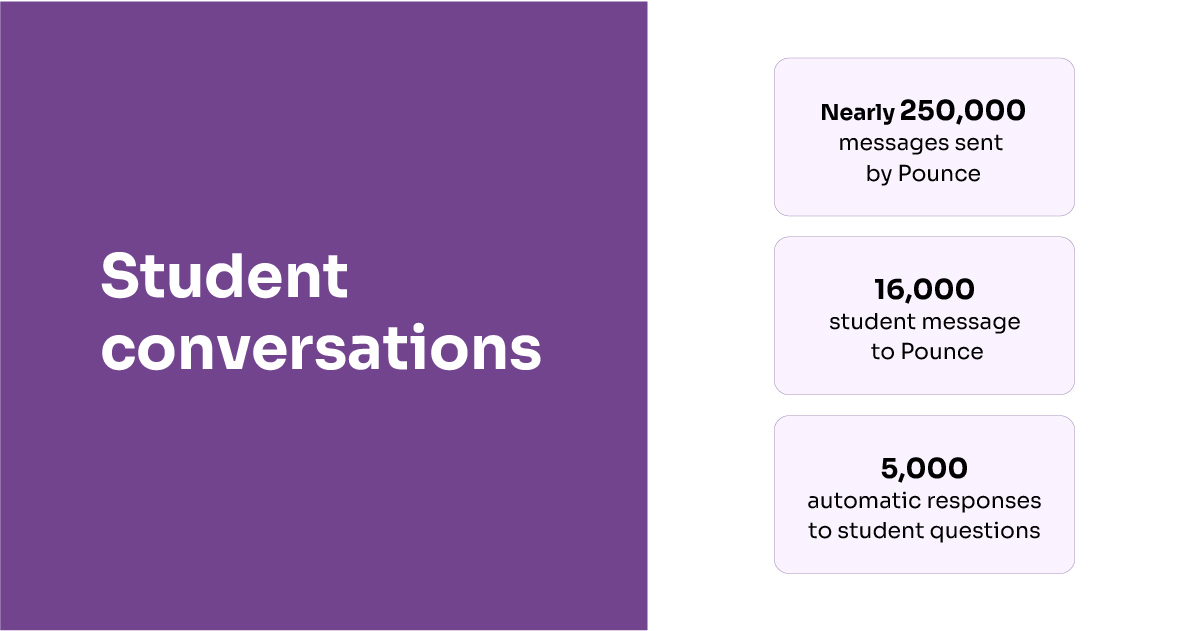
Strengthen Your Institute’s Brand
Students are more likely to stay at a university they feel proud of. Consistent branding in all communication helps reinforce the value of being part of the institution. Using slogans and values like “community” or “excellence” regularly helps students form emotional bonds with the school.
Offer Flexible Online Learning Options
Providing online or hybrid classes gives students the flexibility to balance academics with work, family, or other responsibilities. These options are especially valuable for non-traditional learners. Houston Community College, for example, has a freshman retention rate of 61%, aligning with the national average—highlighting how flexibility can support retention. Institutions like Embry-Riddle further improve student outcomes by offering both on-campus and online programs, meeting students where they are and helping them stay enrolled.

How Student Engagement Platforms Help Boost Retention
A student engagement platform plays a vital role in enhancing student retention and engagement in higher education. By offering targeted support, personalized communication, and fostering a sense of connection, these platforms help institutions identify at-risk students early and create meaningful interventions that boost success.
Real-Time Monitoring of Student Sentiment
A student engagement platform helps colleges track student behavior, academic progress, and concerns continuously. By using real-time insights, institutions can quickly identify at-risk students and intervene early. Such platforms foster stronger student-institution connections and enhance overall retention.
Personalized Student Experiences
Student engagement platforms enable personalized support based on each student’s goals and progress. By using behavioral tracking, institutions can tailor recommendations for courses, resources, or events—boosting engagement by up to 60%. Advisors also gain clearer insights into student needs, allowing them to offer more relevant and timely guidance that keeps students on track.
Use Targeted Communication and Timely Support
Engagement platforms help institutions send personalized, timely messages based on each student’s behavior and needs—instead of generic updates. Tailored communication strategies have been shown to boost engagement by 30%, as students are more likely to respond to content that aligns with their interests and academic journey.
Promotes Informed Decision-Making
When students receive timely insights and guidance, they make better choices about courses, careers, and campus activities. Data-driven platforms help them feel more supported and confident in their academic journey. Institutions using such informed approaches have seen retention rates rise by up to 15%, reducing dropouts caused by confusion or lack of direction.
Enhances Campus Culture and Student Lifecycle
A student engagement platform fosters a connected and inclusive campus environment by encouraging continuous interaction beyond the classroom. Institutions with active online communities report a 35% boost in student satisfaction and engagement, contributing to a stronger campus culture and higher retention.
Conclusion
Student retention in higher education means helping students stay in college and complete their studies. When more students continue their education year after year, it shows that the college is providing the right support and environment for success. By using smart strategies like personalized support, better communication, online classes, and mentorship programs, colleges can keep students more engaged and motivated. A focus on student success and retention benefits not only the individual learner but also enhances the institution’s reputation, performance outcomes, and long-term growth.

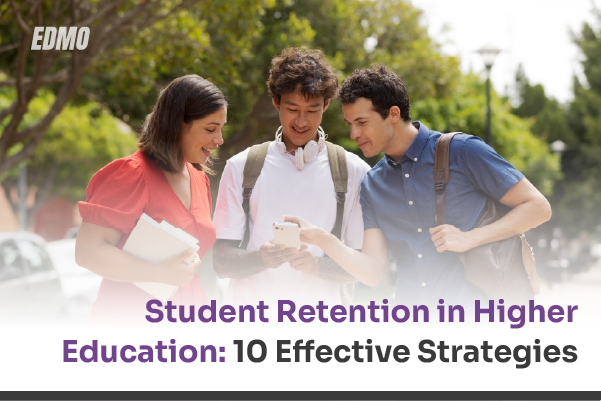








No comments yet. Be the first to comment!
Leave a Comment